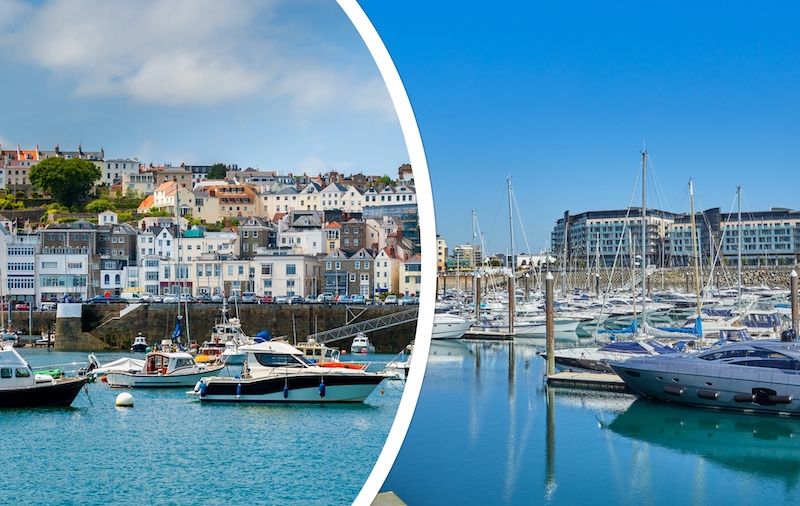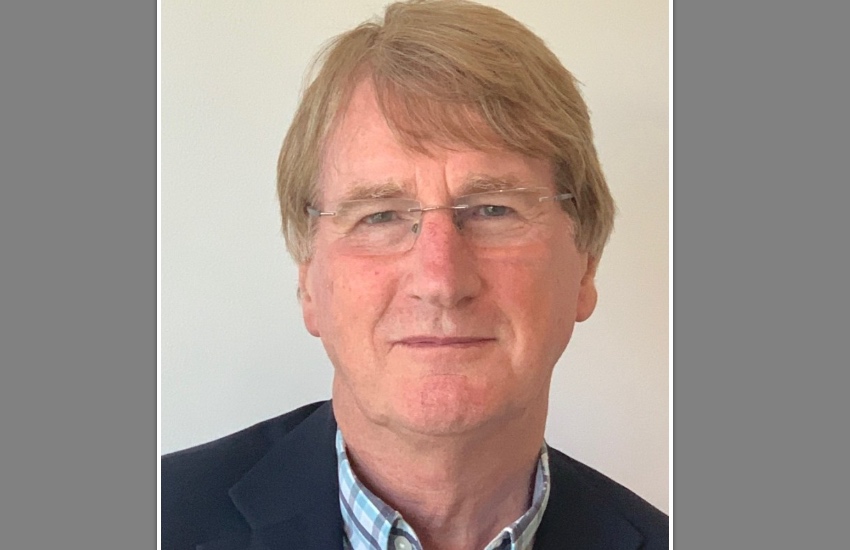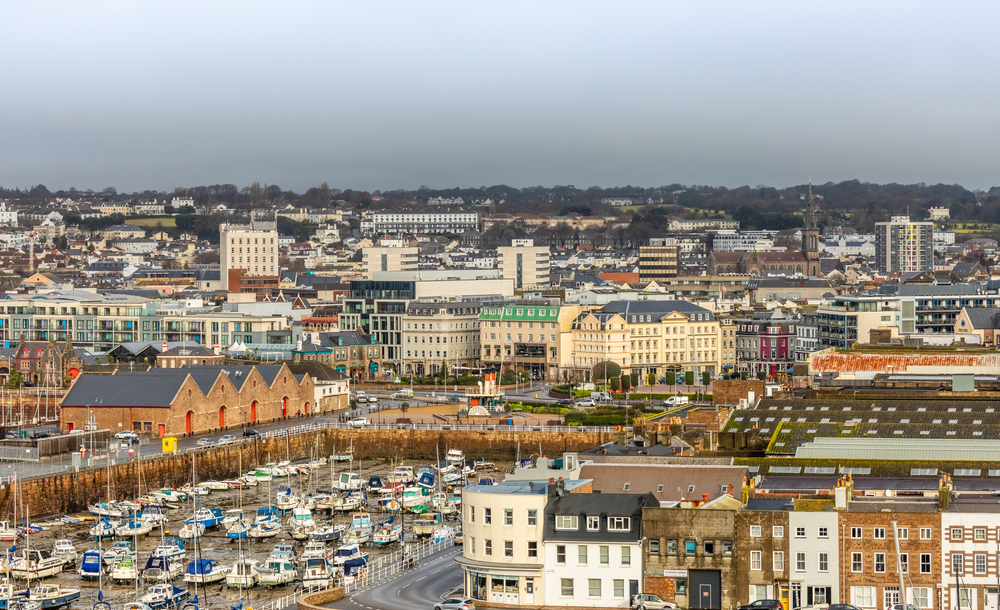


What does the health system of the Canary Islands, the education system in the Azores and the tunnel network connecting the Faroe Islands, all have in common?
They are all being recommended as future models for the Channel Islands to replicate, as part of a Brave New World of collective working, to solve some of the major challenges which lie ahead for us all.
The Vision CI project is based on the premise that there is more that unites us than divides us – and that some of the big problems will best be solved by working together in a far more structured way than we do now.
The benefits of the greater economies of scale are obvious…but will they trump the centuries-old, and in some places, deeply embedded, inter-island rivalry?
Chris Brock (pictured below) is the Director and Principal Consultant of Critical Economics, who are running Vision CI. Connect asked him to summarise the main threats facing the CI, and how they differ between the islands….

Chris Brock: There are both external and internal threats which impact on every island to a great or lesser extent.
Unfortunately, geo-political tensions in all parts of the world are already having greater repercussions on how island jurisdictions plan their affairs in the medium and long-term.
As far as local challenges are concerned, the following are relevant to both Jersey and Guernsey
1) Age drift
In 2021, the Channel Islands’ population stood at just under 170k. Taking the two largest islands, the combined Jersey and Guernsey population stood at 167k, a 38% increase over 1971 (at 121k).
Despite a 23% increase in Guernsey’s population since 1971, there are now around 3,000 fewer 0 - 9 year-olds in the island than there were half a century ago. This is not the case in Jersey where there has been a 2,000 increase. The 50 - 59 age group now represents the peak age band in both islands with 27,000 people in this group as compared with 14,000 in 1971 - an 86% increase.
There are now three times the number of residents in Jersey and Guernsey who are aged 80 (9,000 compared with 3,000 in 1971. There are a further 14,000 who are currently aged between 70 and 79 (7.6k in 1971), an 84% increase.
2) Land area and population density
One of the issues which both Jersey and Guernsey faces is the shortage of potential land upon which the development of housing and infrastructure can be undertaken within sustainable and environmental limitations.
Taking the three Crown Dependencies, Guernsey remains the most densely populated island at over 2,500 residents per square mile with Jersey slightly lower than this at 2,245 residents per square mile. By comparison, the population density in the Isle of Man is just under 400 per square mile.
3) Health and long-term care
The future of public healthcare provision is the ‘Achilles Heel’ of all western societies. The Channel Islands are no exception with current cost of healthcare standing at £0.5 billion annually.
However, if current CI age profiles are projected forwards by 20 years and allowing for mortality averages, it is estimated the number of people over 80 in the CI could be in the order of 20-25,000 as compared to 9,000 now (a near threefold increase).
Taking account of the age of the population where most health and social service costs are incurred, and factoring in the number of people who may well have to revert to public rather than private healthcare at the point of retirement, these projections would undoubtedly mean that CI health and social services costs could increase substantially over the 20-year period.
4) Employment and labour availability
The employment scene worldwide is changing rapidly and the negative impacts are already being felt in the Channel Islands as elsewhere. Given the external geo-political pressures and economic uncertainty which currently exist and which will probably remain a problem for some time to come, the issues relating to labour challenges that both Jersey and Guernsey face are likely to increase rather than diminish over time.
5) Climate change
The speed at which actions are adopted to reduce global warming will depend upon what transpires following COP27 in Egypt this last November. However, there is a probability that jointly agreed actions will again be superseded by the many geopolitical tensions currently existing worldwide and by the ongoing economic and social challenges still prevailing as a result of the COVID Pandemic.
Both Jersey and Guernsey have densely populated areas which are vulnerable to sea level rise and storm surge. Therefore, the capital infrastructure costs associated with the additional protection of low-lying coastal areas as well as port and other key infrastructure facilities (e.g. energy) will undoubtedly be very high and the work will take a considerable time to plan and roll out.
6) Economic sector imbalance
The evolution of the economic and employment profiles of both Jersey and Guernsey have been significant over the past 50 years and now bear little resemblance to what were in place in 1971. While both islands’ current profiles are broadly similar, they have gradually been redefined as a result of different population policies adopted in each island. In addition, the inevitable impact of information technology and artificial intelligence could further diverge each island’s economic base.
The continued dominance of the finance sector is, to some extent, reassuring and must be welcomed in terms of value, it is not without potential risks However, one thing is clear. No other economic sector could generate anywhere near the same level of economic and fiscal benefits per capita as does the financial services sector.
7) Long-term strategic planning
During the last decade or so, the speed of government decision-making has tended to slow down and risk aversion has been more obvious. In addition to the international and national pressures now impacting more than ever on the effective rollout of island strategies and policies, there are on-island factors such as ongoing funding, political commitment, and public engagement which can also divert the implementation process of any medium/long-term plan.
Connect: In terms of public sector spending, how do Jersey and Guernsey differ in their approaches? Where do they put their money? How do you think that needs to change?
Chris Brock: The islands are very dependent on income tax revenue with both at around 70% of total revenue. When one looks at the total income on a per capita basis, Jersey is estimated to generate approximately £10.2k on a per capita basis while, in Guernsey, this will be at £8.4k.
What is interesting is how similar are the islands in relation to 2023 government expenditure commitments to various functions. The main difference is in healthcare which represents 29% of overall expenditure levels In Jersey, while in Guernsey, it is at 38%. This is perhaps an example of the ‘critical mass’ and ‘economies of scale’ challenges two adjacent islands have with significantly different population levels but providing minimum on-island facilities and meeting similar public expectations.
In terms of per capita expenditure levels per annum, these are not too dissimilar between the islands with Jersey at £9.0k and Guernsey at £8.4k.
Connect: You use the terms ‘critical mass’ and ‘economies of scale’ when discussing solutions…why?
Chris Brock: There is clear evidence globally that all islands have major challenges to address (primarily relating to the funding and delivery of public services) which require long-term strategic planning and financial commitment. However, questions arise as to what island ‘A’ with a population
of, say, 16,000 should have by way of on-island versus off-island services and infrastructure, as opposed to island ‘B’ with a population of, say, three times the size. That infrastructure includes such things as the size of hospital and local medical services to airport and harbour facilities.
But the most important point to make is that, based on only population size, island ‘A’ does not necessarily have just a third of what island ‘B’ has available. In many instances, island ‘A’ may
well strive to provide similar service levels as Island ‘B’ because its citizens demand the same level of on-island public services that island ‘B’ can offer. These scenarios equally apply to the Channel Islands which has an overall population of 170,000 which is unevenly split between a
number of island locations with separate government structures and populations ranging from over 100k down to just 500.
Connect: Has the private sector already got to grips with those terms, using them as solutions?
Chris Brock: Over the last 15 years or so, critical mass and economies of scale have already been applied in many areas of the private sector within the Channel Islands. There have been numerous businesses, particularly UK corporate organisations which have seen the merit in operating seamlessly across both Jersey and Guernsey and, in some instances, Alderney as well.
This growing pan-CI trend can now be seen across the majority of economic sectors. In some instances, mergers and acquisitions have occurred out of necessity because of a contraction of market size and/or greater competition, but other factors come into play including the growth in the use of IT and artificial intelligence, the varying pace of economic development in each island, and the need to achieve economies of scale by providing a broader skills base within the organisation and increasing overall buying power.

Pictured: St. Helier.
Connect: You set out other global islands which have solved some of our problems…can you summarise each of those?
Chris Brock: There are many examples around the world where best practice in terms of ‘critical mass’ and ‘economies of scale’ can be identified. Examples of these include…
Connect: Your solution is much greater CI partnership…set out the areas where you would like to see this, and how might each work?
Chris Brock: The merging of services on a pan-CI basis could well curb the inevitable growth in public expenditure. CI residents may be able to benefit from more specialised and efficient services delivered locally and, there could be greater on-island resilience to combat the inevitable repercussions of ‘game-changing’ external events.
There are a number of ways in which the VISION CI initiative can move to the next stage. The challenge is that each public service is a separate entity, split between two or more islands and requiring specific expertise in the functions that it delivers (e.g. Health, Law & Order, Education, etc.) There are also some government functions which are more relevant to how residents in each island run their own lives on a day-to-day basis (e.g. employment policy, etc.).
The suggested route forward is, therefore, the creation of a pan-CI, ‘non-political’ and independent Strategic Forum comprising representatives drawn from each island. Each potential Forum applicant should be required to submit the reasons why he or she should be a member of the group.
Representation from the islands’ younger generations would also be a key element of the Forum’s constitution.
From the outset, a ‘can-do’, innovative thinking attitude should prevail with no competing, insular agendas being brought to the table. Checks and balances would have to be built into the process but nothing should be off the agenda. Consensus decision-making should also be the order of the day.

Pictured: Guernsey's and Jersey's hospital.
Pan-CI flexible employment pool
Flexible employment and ‘skills for the future’ are important areas which could be dealt with on a pan-CI basis due to the world shortage of labour generally. A policy of the free movement (physically and virtually) within the whole of the CI of economically active persons should be given real thought.
Pan-CI delivery of education and training
In terms of vision, there could well be a time when the traditional school model will change and the use of remote learning will become the norm with schools gradually being replaced by centres for ‘soft skills’ training. Such a change would justify a common approach across the Channel Islands particularly in the provision of e-learning facilities. Additionally, the growing shortage of teachers across the islands is not only a local but a national and international problem.
Climate change and the environment
The ever-pressing demands of climate change mitigation have not diminished in any way - indeed, probably the opposite is the case. Again, the ramifications on the CI could be potentially significant.
Three obvious impact areas are sea level rise (storm surges and flooding), water supply security, and CO2 emissions policy.
Ageing population: resource demands
As already highlighted, the number of people aged over 80 in the Channel Islands is likely to nearly treble (from 9k to 20/25k) over the next 20 years. This will significantly increase health costs and impact immensely on CI resources as a whole with a real danger of service duplication in each island. Another factor is the shortage of long-term care facilities and personnel which will inevitably draw
economically active residents away from other economic sectors. A pan-CI strategy would be eminently sensible particularly in developing innovative home care and artificial intelligence solutions.
This interview was first published in the current edition of CONNECT magazine, Express' sister publication.
The online version of CONNECT magazine can be read HERE.
Comments
Comments on this story express the views of the commentator only, not Bailiwick Publishing. We are unable to guarantee the accuracy of any of those comments.